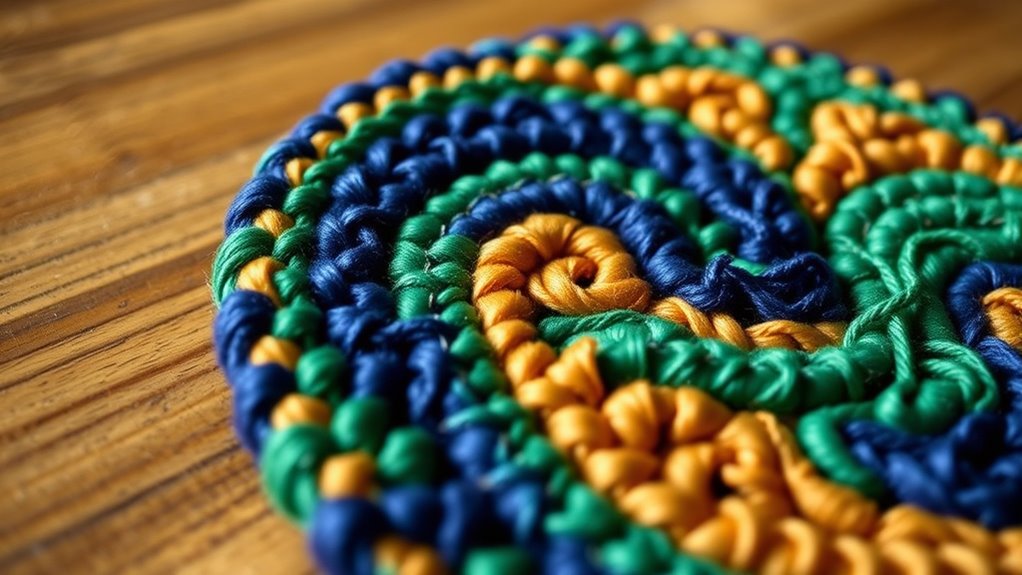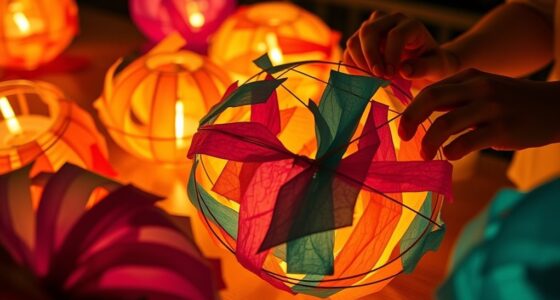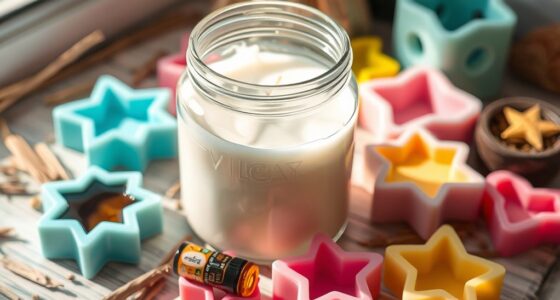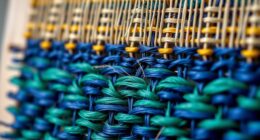To create a punch needle coaster, start by choosing durable, soft fibers like wool or acrylic that hold their shape well. Plan your color scheme with complementary or contrasting shades to make your design pop. Use a focal color or simple pattern to guide your stitching, and lay out your fibers beforehand to avoid mismatched hues. Proper fiber selection and thoughtful color choices make your coaster both functional and visually appealing—continue to explore for more tips.
Key Takeaways
- Select soft, durable fibers like wool or acrylic for comfort and longevity in your coaster.
- Plan your design with a focal color or simple pattern, choosing contrasting or harmonious shades.
- Lay out fibers beforehand to visualize color and texture combinations, ensuring a cohesive look.
- Use smooth, consistent fibers to create even stitches and a polished finish.
- Incorporate textured or patterned fibers to add visual interest and reflect personal style.
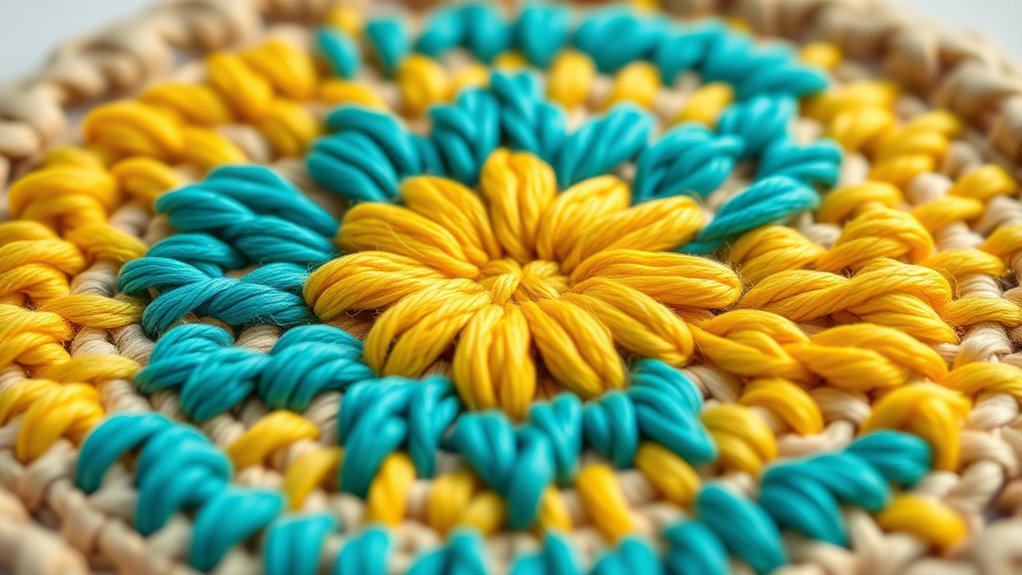
Creating a punch needle coaster is a fun and easy project that lets you add a personal touch to your home decor. To start, the key is in your fiber selection. You want fibers that are durable yet soft enough to create a cozy feel. Wool or acrylic yarns are popular choices because they hold their shape well and are available in a wide range of colors. Choose fibers that are smooth and consistent in thickness to ensure your stitches stay even. When selecting fibers, consider how much wear and tear your coaster will get—if it’s for a busy table, opt for sturdier materials that can withstand frequent use and cleaning. The fiber selection process is vital because it influences the finished look and longevity of your coaster. Once you’ve picked your fibers, think about color coordination. This step is where your creativity truly shines. You can choose a monochromatic palette for a sleek, modern look or go bold with contrasting colors for a lively vibe. If you prefer something subtle, select shades that complement your existing home decor, such as soft neutrals or pastel tones. For more vibrant aesthetics, consider combining bright colors or using patterned fibers for added visual interest. When planning your color scheme, keep in mind that the punch needle technique creates textured designs, so selecting colors that contrast enough to stand out but still blend harmoniously will make your coaster pop. You might also want to incorporate a focal color or a simple pattern to guide your fiber choices. Mixing different shades within the same color family can add depth and dimension to your design. To achieve a cohesive look, lay out your fibers before starting your project, pairing colors and textures to see how they work together. This step helps prevent mismatched hues and ensures your final piece looks polished. As you work on your coaster, remember that the fiber choices and color coordination directly impact the overall aesthetic. Take your time to experiment with combinations until you find the perfect balance. Additionally, understanding fiber qualities can help you select the best materials for durability and softness. With thoughtful fiber selection and color planning, your punch needle coaster will not only be functional but also a charming, personalized accent for your table or coffee area. Ultimately, these choices reflect your style and creativity, transforming a simple craft into a unique piece of home decor that you’ll enjoy for years to come.
Frequently Asked Questions
What Types of Fabric Are Best for Punch Needle Coasters?
You should choose tight, sturdy fabric types like linen, monk’s cloth, or burlap for punch needle coasters. These fabrics provide excellent coaster durability and hold the punch needle stitches securely. Avoid loose or stretchy fabrics, as they won’t support the design well. Opting for durable fabric types guarantees your coaster lasts longer and maintains its shape, making it both functional and attractive for everyday use.
How Do I Choose the Right Thread or Yarn?
Did you know that choosing the right thread or yarn can increase your coaster’s durability by 30%? When selecting thread, opt for embroidery floss or cotton yarn for a tight stitch and vibrant color. For a softer touch, try wool or chenille yarn. Consider your project’s look and feel, and match your thread selection with the fabric to guarantee your punch needle coaster turns out stunning and long-lasting.
Can Punch Needle Coasters Be Machine Washed?
Yes, punch needle coasters can be machine washed, but their machine washability depends on the type of yarn you used. To guarantee coaster durability, choose washable, colorfast yarns, and always follow the care instructions. Hand washing is safest for maintaining their shape and vibrancy, but gentle machine washing on a delicate cycle with mild detergent can work if the yarn is suitable. Always let your coasters air dry for best results.
What Size Punch Needle Needle Is Recommended?
You should use a 3.5mm punch needle for your coaster project. Imagine Sarah, who struggled with uneven stitches until she switched to this size, making her coaster look professional and polished. The 3.5mm needle works well with punch needle techniques and allows for detailed coaster design options. It provides the perfect balance between ease of use and precision, helping you create beautiful, durable coasters effortlessly.
How Long Does It Typically Take to Complete a Coaster?
It usually takes about 2 to 4 hours to complete a punch needle coaster, depending on your skill level and the project timeline you set. If you’re a beginner, expect it closer to four hours as you get comfortable with the technique. More experienced crafters might finish it in just a couple of hours. Take your time to enjoy the process, and don’t rush—your coaster will turn out great!
Conclusion
Once you finish your punch needle coaster, you’ll see how a simple project can turn into a treasured keepsake. Just like a coaster protects your table from spills, your handiwork shields your space with warmth and personality. I once gifted a handmade coaster, and the smile it brought reminded me that small creations hold big meaning. Keep sewing and crafting—each stitch adds a personal touch that makes your home uniquely yours.
